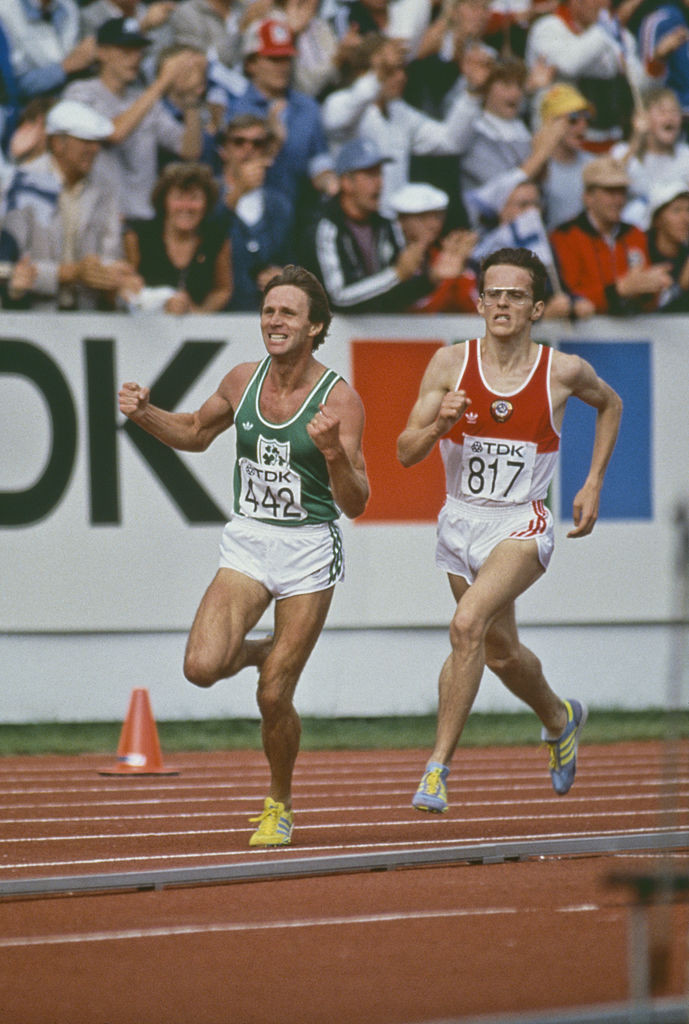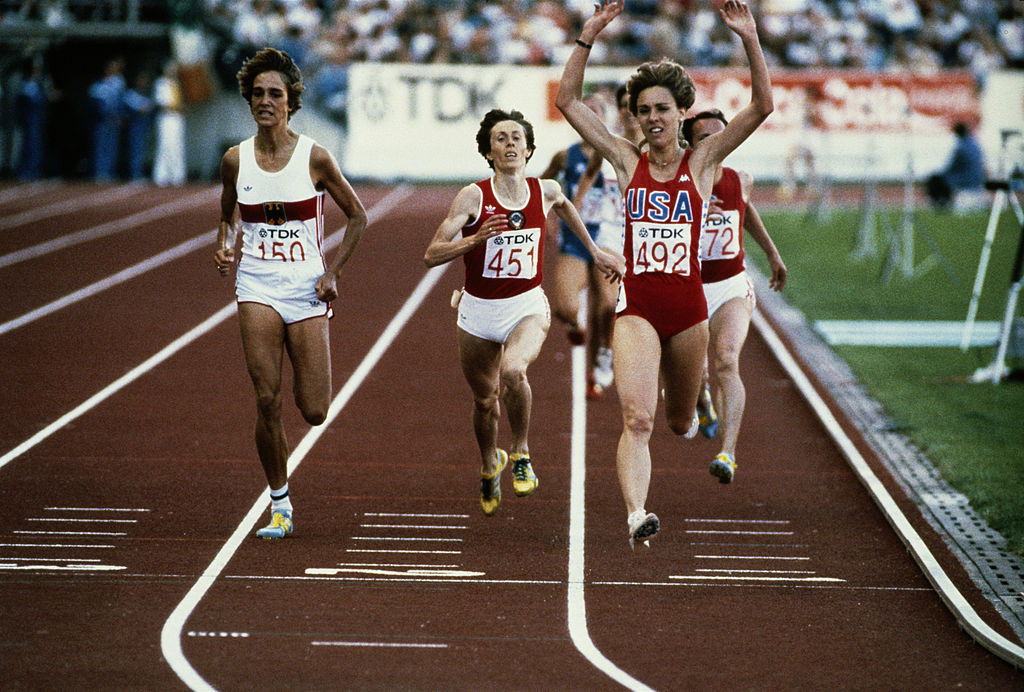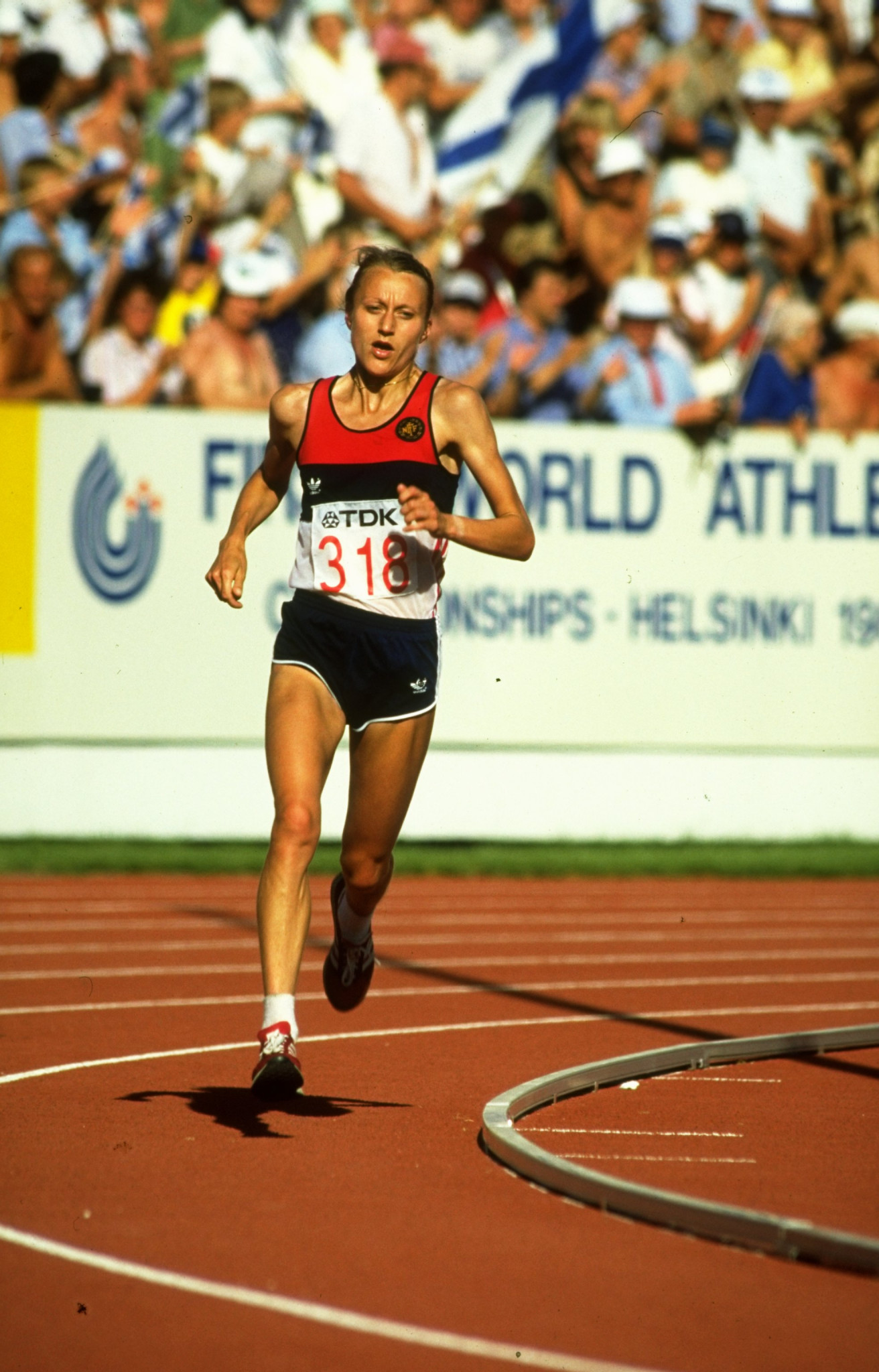
It was 40 years ago today the first World Athletics Championships concluded in Helsinki with a spectacular glut of finals - many of which are frequently referenced to this day.
Eamonn Coghlan of Ireland, who had finished fourth in 1976 Olympic 1500 metres final and the 1980 Olympic 5,000m final - and by own admission had not helped himself with his tactical choices - won the 5,000m title in exhilarating fashion, unable to hide his gathering glee, manifested by two clenched fists, before taking the lead on the back straight. Ahead of him, gloriously, two hundred metres of knowing he was going to win.
Britain’s 22-year-old Steve Cram, already European and Commonwealth Games champion, claimed the 1500m title ahead of such talents as Said Aouita, Steve Scott and Steve Ovett.
In the women’s 1500m Mary Decker of the United States, already winner of the 3,000m title, completed a double by finishing ahead of Soviet runners Zamira Zaitseva and Yekaterina Podkopayeva.
While the latter was a compelling contest in itself, it gained resonance from the political circumstances of the time, when the Cold War was at its height.

The US boycott of the 1980 Olympics in Moscow following the Soviet Union invasion of Afghanistan in 1979 meant that the inaugural World Championships in Finland were the first big opportunity for athletes of these two nations to compete, not just for medals, but for national kudos.
Not that such a thing would ever happen nowadays.
The final medals table saw the US finishing ahead of the Soviet Union by just one medal, with 24 medals - eight of them gold - to 23 - six gold.
While Decker won a double, Carl Lewis landed a treble, taking the men’s 100m and long jump titles and anchoring the 4x100m team to gold in a world record of 37.86sec.
The Soviet team won the men’s 4x400m, the men’s and women’s high jump through Hennadiy Avdyeyenko and Tamara Bykova, the hammer through Sergey Litvinov and the pole vault thanks to Sergey Bubka, who earned what would be the first of six world titles.
While the US were marginal winners in the bragging rights department, however, the medals table was topped by East Germany, with 10 golds in a total of 22 medals.

Timing also worked in favour of Helsinki 1983 in terms of the women’s marathon as it hosted the first global championship before the Olympics got into the act a year later at Los Angeles 1984.
By the time Grete Waitz won that first global women’s marathon in Finland - a year before taking silver in Los Angeles - she was already a four-times winner of the New York City Marathon and had added the London title on April 17, 1983 in a world record of 2 hours 25min 28sec.
Down the years medical experts have shaken their heads and warned of the dangers of women running distances over 400 metres, then over 800 metres, then over 1500 metres…
Inevitably there was strong resistance from such quarters to the idea of women running 26 miles 385 yards (42.195 km).
There was graphic evidence of the general resistance to women running the event in the photos of Kathrine Switzer, attempting in 1967 to become the first woman to run the Boston Marathon - which was solely for male entrants - and being harassed en route by an enraged race manager, Jock Semple, who was swiftly deposited on the course by the hefty figure of Switzer’s boyfriend Thomas Miller, who was running with her.
As a result of her run, the Amateur Athletic Union banned women from competing in races against men, and it was not until 1972 that the Boston Marathon established an official women's race.
As women began to feature increasingly on the marathon scene during the 1970s pressure grew for a women’s event to be included at the Olympics as runners such as Waitz swiftly established a series of world-class times.

The day after Waitz’s win in London Joan Benoit of the US, who would go on to win the inaugural Olympic title on home soil the following year, established a new fastest time for the women's marathon when she clocked 2:22:43 in Boston. That cut almost three minutes off Waitz’s London performance – although the time was queried for record purposes because of Boston’s point-to-point course.
Benoit was not eligible to compete in the Helsinki World Championships as she had not run in the Avon International Marathon in Los Angeles, which the United States used as the qualifying race, choosing to focus on shorter distances instead.
So Waitz was regarded as favourite. She lived up to that billing with victory in 2:28:09, having sufficient time to complete a victory lap of the 1952 Olympic Stadium before her nearest rivals entered it.
For all her experience this was a novel experience for Waitz – not just because of the status of the event, but also because she was running her first female-only race.
She said that the make-up of the race changed her tactics significantly, as there were no men around her to share the pacing responsibilities: "Here, the final time didn't really matter," she said. "The idea was to win the Championship."
That she had done, indelibly and historically.

